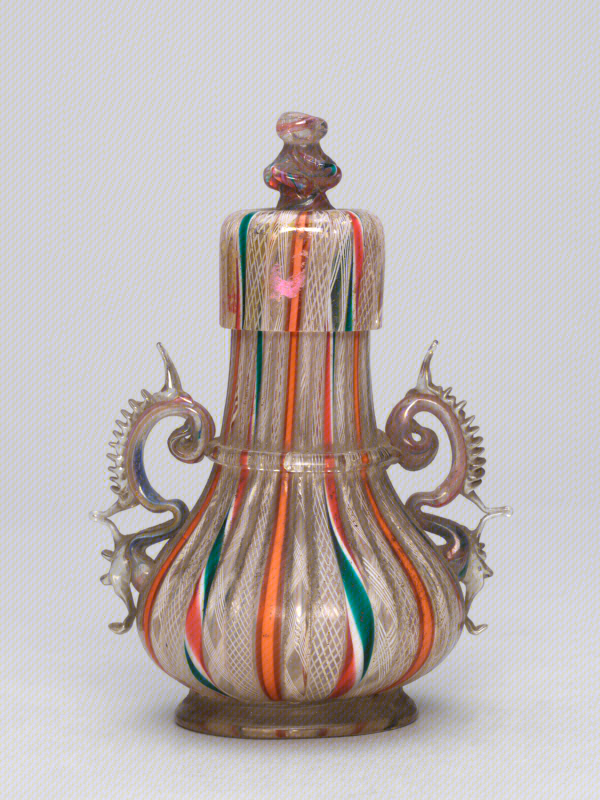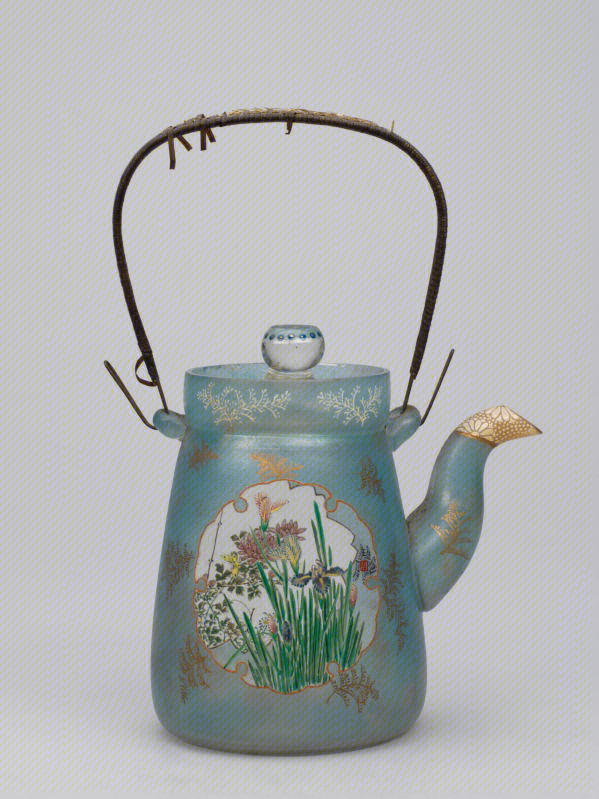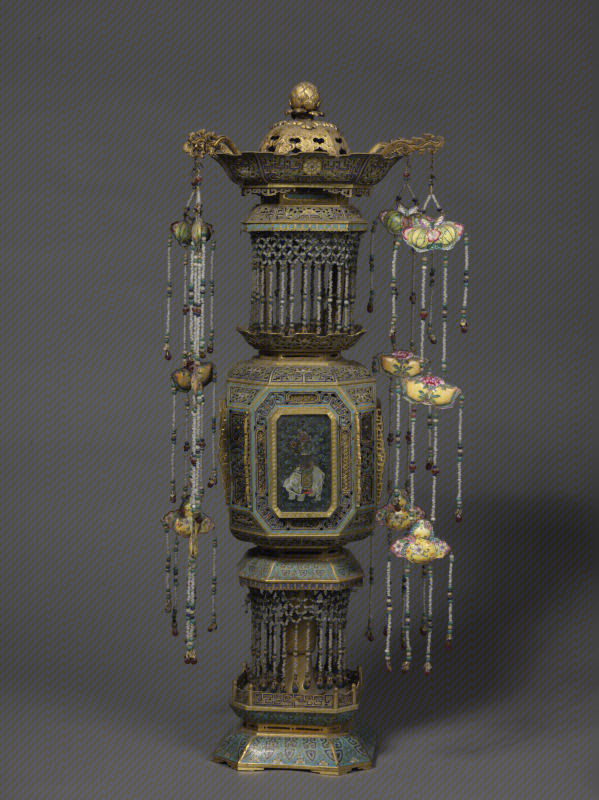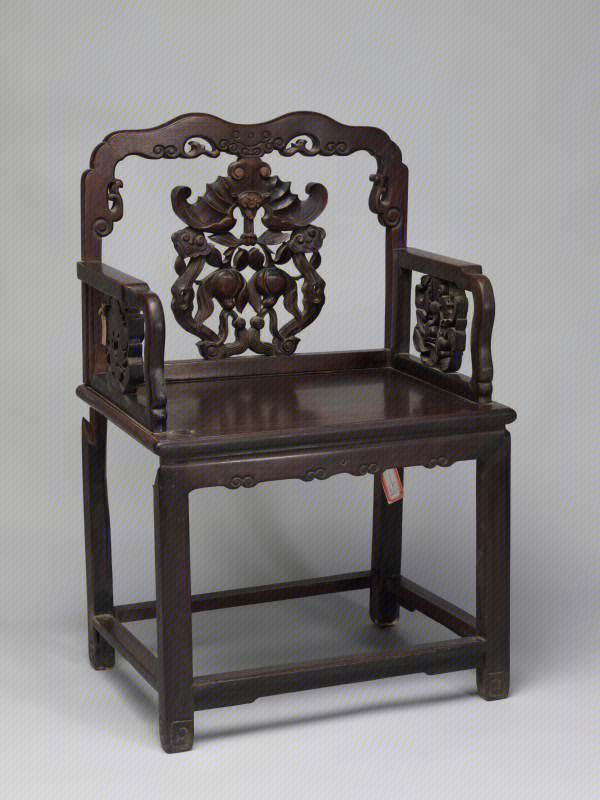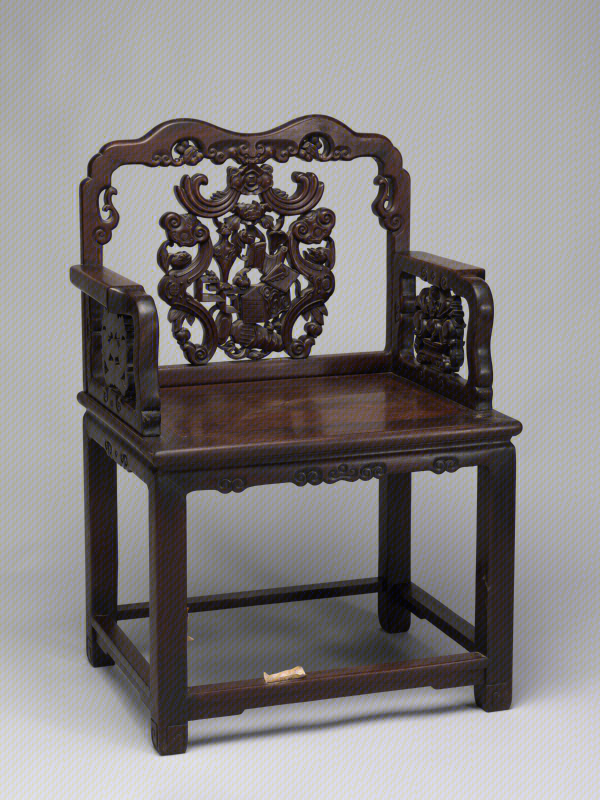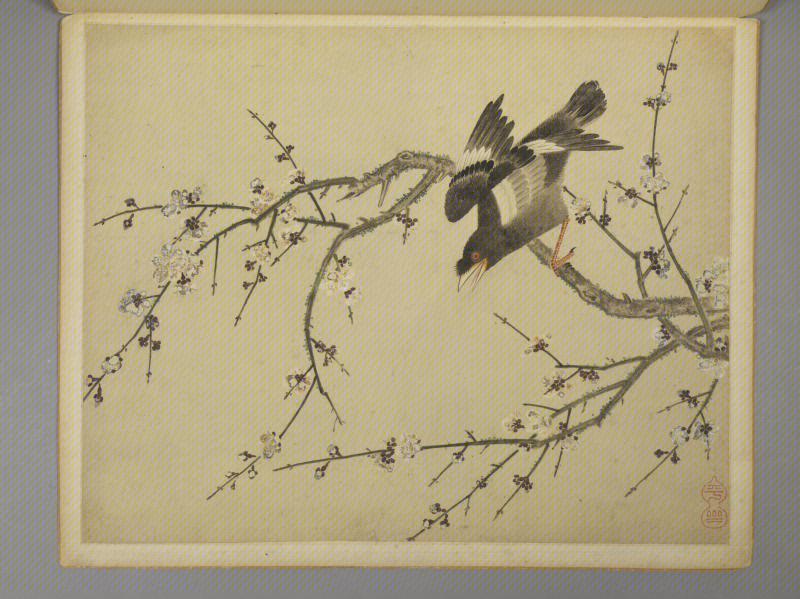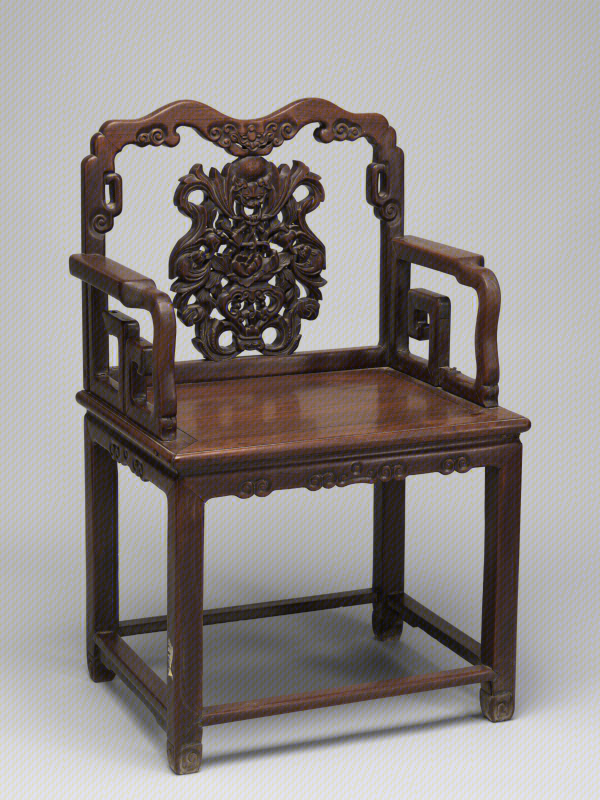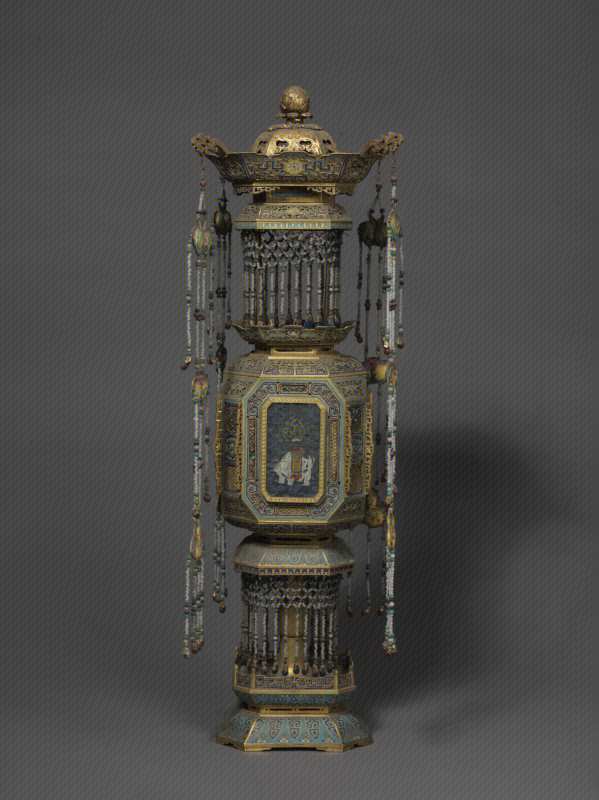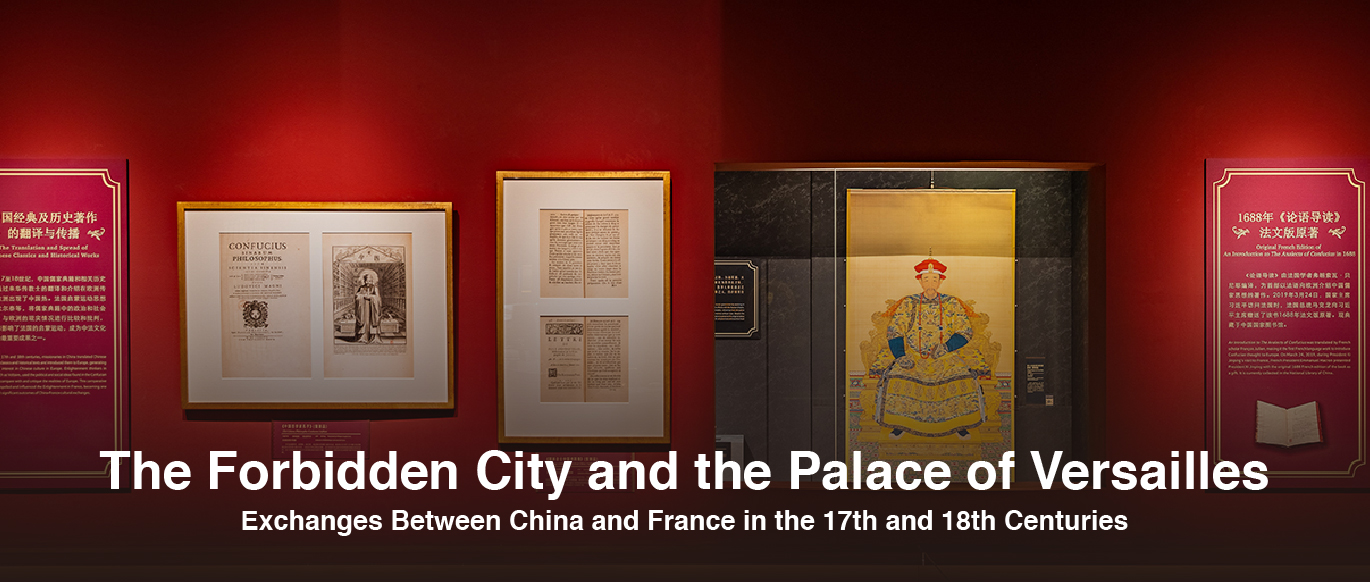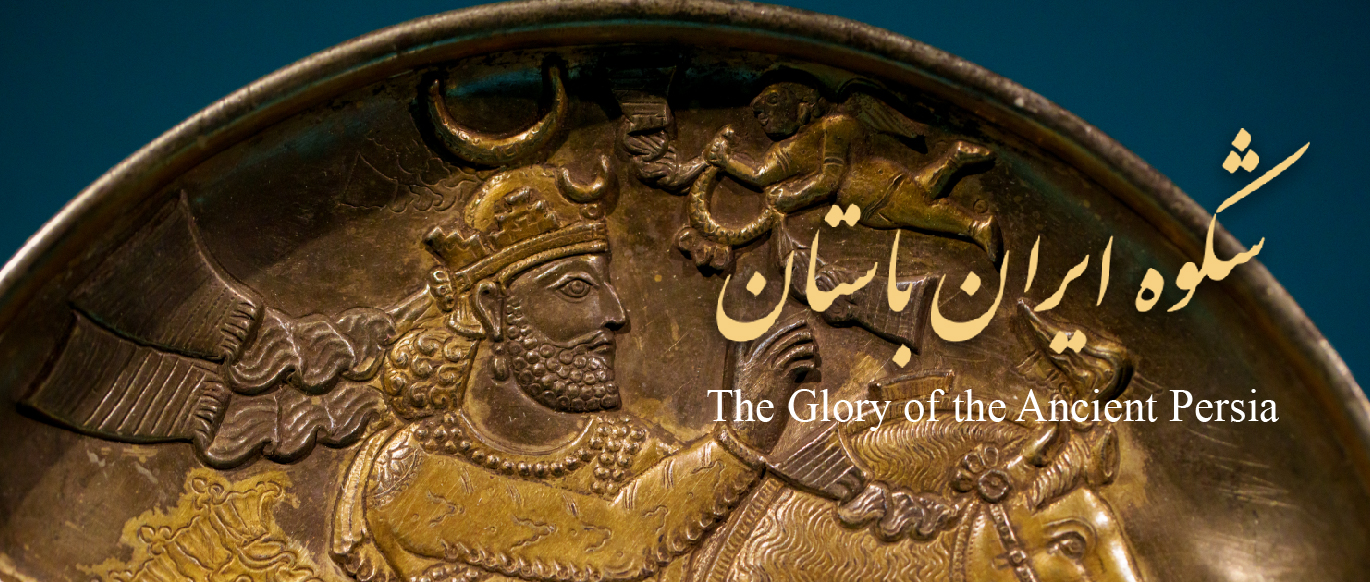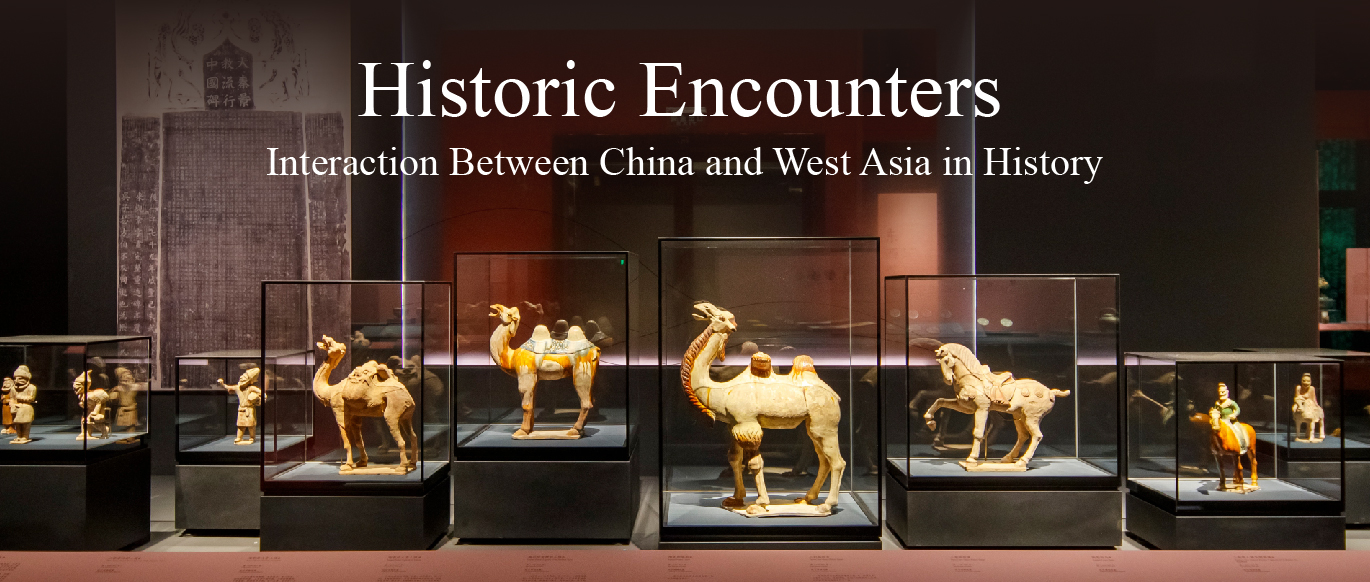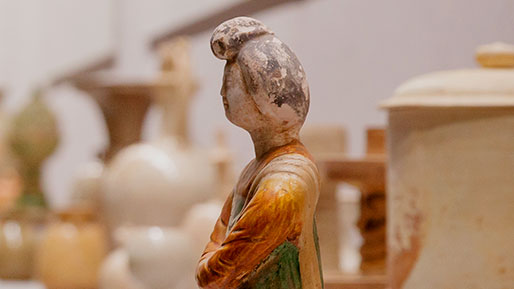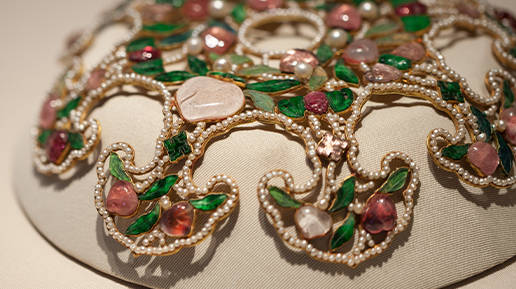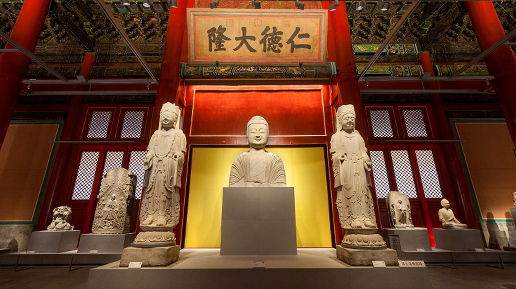
The Palace Museum’s Furniture Gallery opened in September of 2018. Dedicated to one specific form of art, the gallery is similar to the Ceramics Gallery, Calligraphy and Painting Gallery, and other galleries showcasing their respective forms of art. The initial exhibition space of the Furniture Gallery is located in the southwest sector of the Forbidden City in an area known as the South Storehouses. This first-phase exhibition includes a display of over 300 pieces or sets of Qing-dynasty (1644–1911) furniture used by the imperial court.
The curatorial plan includes three phases. In the first-phase exhibition space, in addition to the display of over 300 works of Qing furniture, another group of over thirty exquisite pieces or sets of furniture from the Kangxi (r. 1662–1722), Yongzheng (r. 1723–1735), and Qianlong (r. 1736–1795) reigns are presented in scenes of courtyards, scholarly studios, music rooms, or other thematic displays with state-of-the-art multimedia features and lighting. These displays recreate scenes from the Qing dynasty as seen in works such as Painting of Hongli “Is One, Is Two” by an Anonymous Qing Dynasty Artist (Qingren hua Hongli shiyi shier tu).

The Palace Museum currently has over 6,200 pieces or sets of Ming (1368–1644) and Qing furniture in its collection; many of these works are rare and the most superb examples of certain furniture types from those periods. For many decades, these treasures of imperial furnishings have been stored deep within the Museum’s collection storehouses. Beginning in 2015, the administration began to expand the areas accessible to the public and increase the number of items on view. At the time, the South Storehouses were designated as an exhibition space for court furniture. After almost three years of planning and renovation, the South Storehouses were opened in the fall of 2018 as a modern space for storing and showcasing exquisite examples of dynastic furniture.
In his introduction to the Furniture Gallery, the Palace Museum’s Director Shan Jixiang noted that much of the furniture in the Museum’s collection is preserved in above-ground storehouses in tightly-packed spaces. Since many of the palatial halls and courtyards feature period décor with furniture arrangements, the Furniture Gallery with its “warehouse style” presentation, he notes, offers a creative way to share the Museum’s holdings with the public in a manner compatible with conservation principles. Since the furniture has always been stored at room temperature, the exhibition spaces are outfitted with air-circulation systems but will not be air conditioned.

According to the curatorial plan, the Furniture Gallery’s three phases are divided among two areas within the Forbidden City’s southwest sector. The first and second phases will both be opened in the area of the South Storehouses while the third will be located in the area of the Hall of Southern Fragrance (Nanxun dian). With over 2,000 pieces or sets of furniture, the exhibition spaces will serve as both storehouses and galleries. The second phase is designed as a warehouse-style display. The third phase will primarily showcase Ming furniture. In the future, the featured works may change to offer the public a chance to see more of the collection. Eventually, the three complete phases will be complemented with new exhibition spaces in the Hall of Martial Valor (Wuying dian) and the Hall of Embodied Treasures (Baoyun lou).

Initial Exhibition: The Beauty of Furniture from the Kangxi, Yongzheng, and Qianlong Reigns
The exhibition space of the Furniture Gallery in the South Storehouses is divided into two parts; the first is “Country and Family in Qing Dynasty Furniture”—a themed showcase of imperial ritual and lifestyle as seen in the furniture of the period. The second is a warehouse style space designed in accordance with museum-storehouse standards and organized with rows of furniture on shelves; this practical method of exhibition is the first of its kind within China.
This initial exhibition focuses on the country and family with furniture from the reigns of the Kangxi (1662–1722), Yongzheng (1723–1735), and Qianlong (1736–1795) emperors of the Qing dynasty (1644–1911). During the Kangxi reign, furniture craftsmen continued to produce works with Ming-dynasty styles yet made considerable advancements in their use of lacquers and inlays; overall, the styles of that reign are simple but maintain solemnity and a splendid aesthetic appeal. The workshops of the subsequent Yongzheng reign were guided by a rather disparate creativity and, with the emperor’s personal direction and involvement, produced a unique palace style. The Yongzheng Emperor ensured the inclusion of elements of a literati style in all of his furniture production; consequently, works of his reign are impressively elegant. Throughout the Qianlong reign, furniture was crafted with the most advanced techniques and costly materials. The Qianlong Emperor mandated that diverse styles and elements of Confucianism (Ru), Buddhism, and Daoism be included in furniture design. From his halls in the Forbidden City to the courtyards in the gardens and mountains around the capital, from the palace at Mount Pan to the Summer Villa in the mountains of Jehol (Chengde, Hebei Province), the emperor undertook a comprehensive transformation of the interior furniture design and assigned pieces for specific environments and functions.

The Palace Museum has over 6,200 pieces (or sets) of Ming and Qing furniture in its collection. These works span from the Yongle reign (1403–1424) to that of the last Qing emperor, Puyi (the Xuantong Emperor, r. 1909-1911). Most of these pieces were utilized by the Qing court, and the largest share are from the Qianlong period. The five main types of furniture are chairs, beds, tables, cabinets, and screens in their various iterations (i.e., thrones, tea tables, wardrobes, etc.) made primarily with lacquer, hardwood, or whitewood. The lacquered furniture includes many examples of lacquer patterns, inlays, and relief. While the most important furniture was crafted from various hardwoods (zitan, huali, and hongmu), a range of other woods was used for various important pieces or articles for more common use. Imperial furniture was embellished with gold, jade, ivory, rhinoceros horn, coral, clam shell, kingfisher feather, agarwood, stones, and other precious materials. Styles include Ming, Qing, and Western designs. With the furniture in the collection primarily originating in the Ming and Qing courts, the pieces represent traditional Chinese culture and provide tangible examples of items recorded in the archives of the workshops of the Qing Imperial Household Department (Neiwu fu).
The Imperial Household Department was responsible for the management of the possessions and residences of the Qing imperial family and oversaw workshops charged with producing all types of items ordered personally by the emperor. Beginning in the Kangxi reign, imperial palaces and gardens throughout the empire, but especially around the capital, were constructed or renovated, and the need for furniture far exceeded that of previous periods. Imperial production included specific workshops for various types of wood and lacquer craftsmanship, and artisans were summoned from Guangzhou, Suzhou, and other areas to produce imperially ordered furniture. Workshops located within the inner palace necessarily limited the number of craftsmen and the amount of materials employed, so the pieces produced therein were typically the most exquisite. Other imperial workshops in more densely populated areas along major transit routes were an essential link in the supply chain and produced quantities of furniture for palatial use. Additionally, many of the finely crafted pieces used by the court were presented as tribute by officials from throughout the empire and accepted for imperial use after personal inspection by the emperor.
The furniture of the Qing palace reflects the artistic proficiency of the period and provides insight into the development of traditional Chinese furniture. The Museum’s collection along with imperial archives such as Records of Palace Works (Huoji dang) and Records of Tribute (Gong dang) provide important evidence for understanding many aspects of furniture production during the period. Recent publications—including The Complete Collection of Treasures of the Palace Museum: Ming and Qing Furniture (Gugong bowuyuan cang wenwu zhenpin quanji, 2000), Compendium of Archives by the Workshops of the Qing Imperial Household Department (Qinggong neiwu fu zaoban chu dang’an zonghui, 2005), and Complete Edition of Ming and Qing Furniture Collected in the Palace Museum (Gugong bowuyuan cang Ming Qing jiaju quanji, 2016)—have contributed to academic research by presenting primary sources, images, and scholarly conclusions on palace furniture and related issues. The Furniture Gallery is a showcase of some of the finest works of traditional Chinese furniture. Indeed, these treasures are a testament to the vast knowledge and technical prowess of the Chinese people. This space in the South Storehouses brings energy to this new era of cultural prosperity.

Translated and edited by Adam J. Ensign, Zhuang Ying, and Kang Xiaolu


